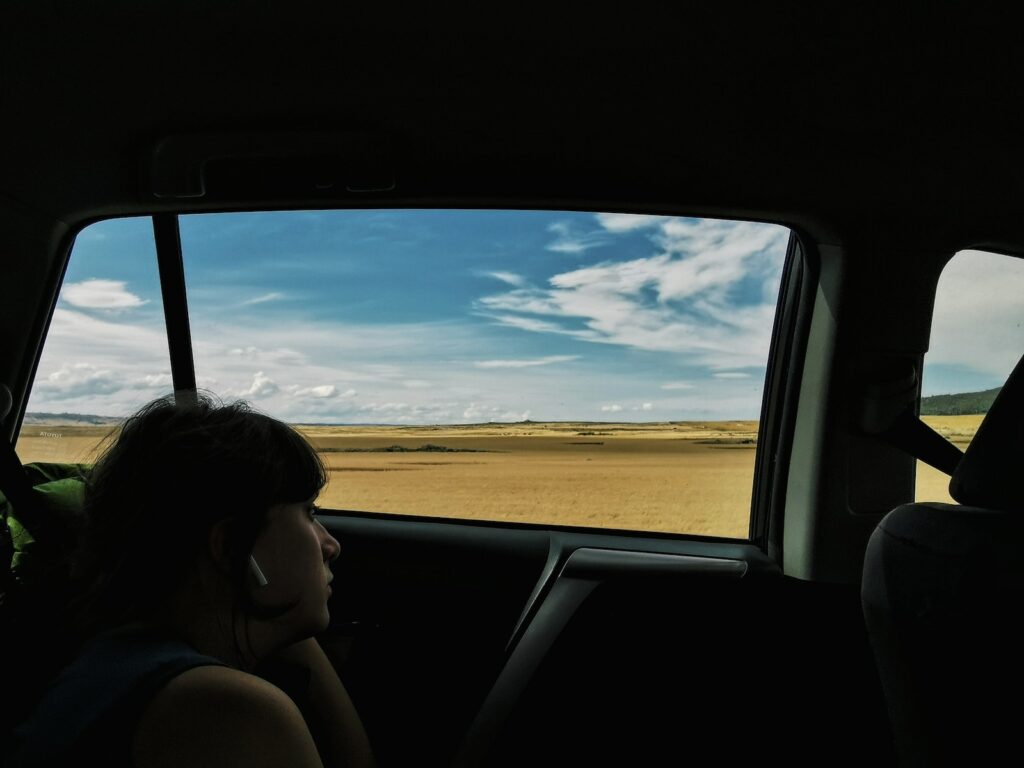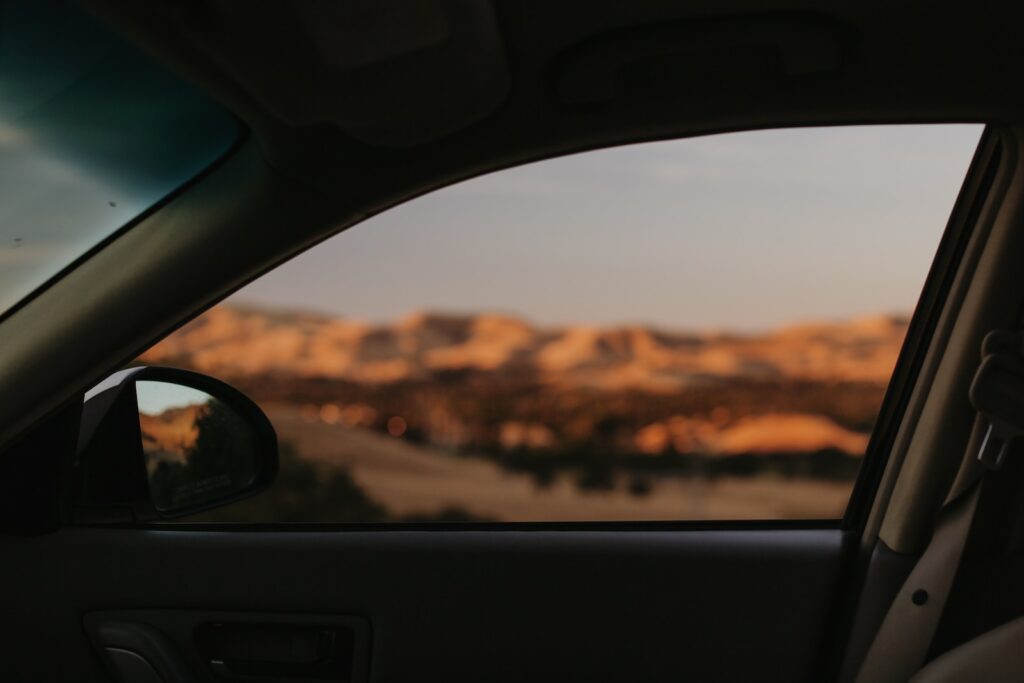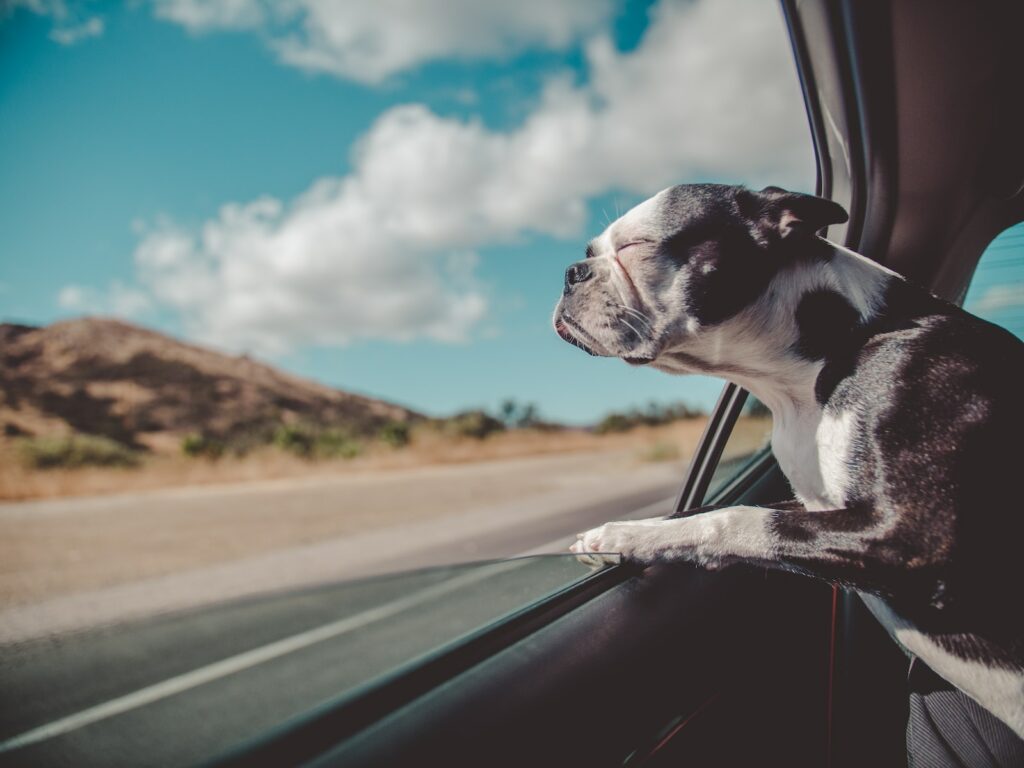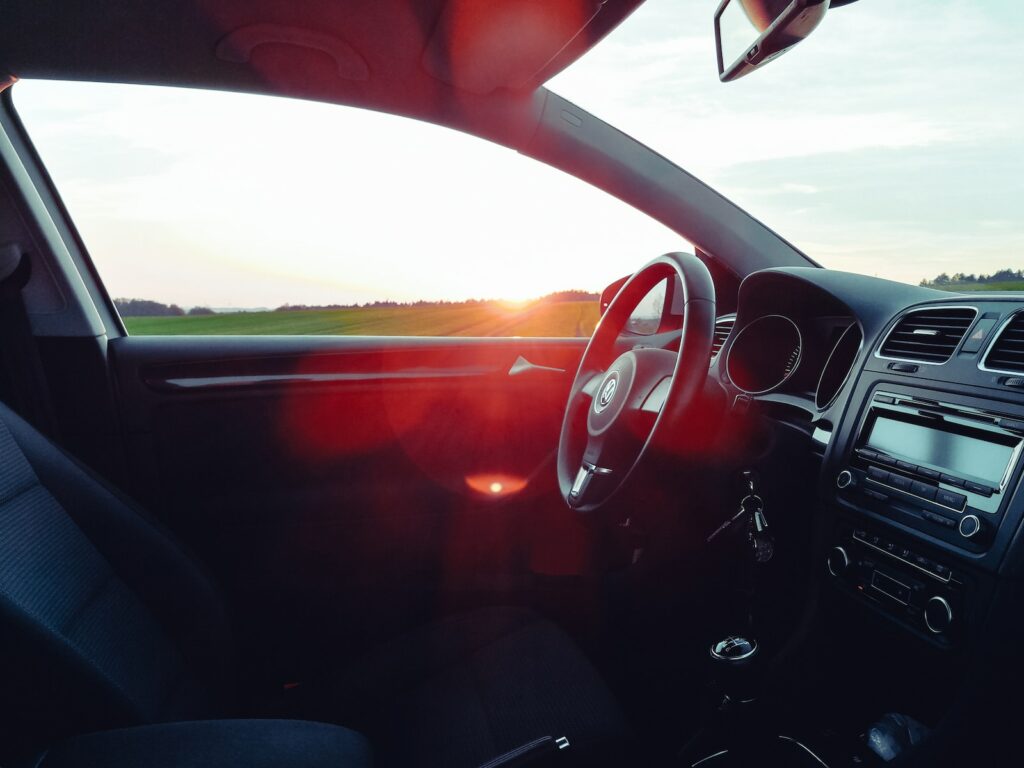A window tint is a thin film that’s applied to the glass in your car, truck, or SUV. It helps block out the sun’s heat and ultraviolet rays, which helps keep your vehicle cooler and protects the interior from fading. Window tinting is available in a range of shades and can be applied to the rear and front side windows, rear and front windshields, as well as backlights. Many people choose to add window tint to their vehicles for privacy, aesthetics, and protection from UV rays. The legal limit for window tint percentage varies from state to state but it usually ranges between 5% and 35%.
The Function of Tint Percentage

Visible light transmission, which gauges the amount of light that can flow through your window tint. A higher percentage indicates that more light may pass through the tint, trying to make it look lighter. Lower VLT percentages appear darker because the tint allows for less light to flow through.
You can tint your windows anywhere between 5% and 90%. However, for a number of reasons related to traffic safety, window tint is governed by legislation. If your window tint doesn’t adhere to state requirements, you risk being stopped and punished.
How to Determine the Percentage of Window Tint?
You should be aware of how to window tint percentage is determined whether you intend to have your car expertly tinted or tint it yourself to stay under your state’s window tint limits. If the windows of your car are clear, you can easily tell. Your car’s windows may, though, indeed be tinted. If so, you must combine the percentages of the current tint and the new tint you will be fixing to determine the output VLT percentage.
For instance, suppose your window currently has an 80 percent VLT and you want to apply a window tint film with a 50 percent VLT to make it darker. 80 percent multiplied by 50 percent is 40 percent VLT, according to the formula. This implies that after your film is installed, you will have a VLT tint of 40%. To ensure that you stay within state-approved window tint values, it is best to conduct the necessary calculations even before buying window tint film.
How deeply should car windows be tinted?
Vary from state to state you live in, different percentages of window tint may be legal. While some states permit a wide range of window tint darkness, it’s recommended to stay within your comfort zone and avoid going too dark. You shouldn’t set your window tint too dark to prevent accidents because a dark tint can impair your eyesight in low light.
What Is the Darkest Legal Window Tint?
The driver’s and passenger’s front windows can typically have up to 50% VLT. The most typical restriction is a VLT of 35 percent for the rear passenger, side, and back windows. The mentioned window tint regulations of the state where you live will determine how dark you can go.
Levels of Window Tint that Are Legal in Each State

Terminology for Window Tint
- The proportion of visible light transmission (VLT) illustrates tint darkness.
- The front side windows can be adjusted by the driver and passenger.
- Rear side windows are the remaining side windows, along with the windows for the passengers in the back seats.
- The term “shade band” refers to a rectangular window tint film band that stretches down from the top of the windshield.
- The windshield’s upper corner sides have a marking left by the glass producer called the AS1 line.
- Tint reflection alludes to the reflective or metallic quality of the window tint.
- If a slash (/) separates two VLT percentages, the first value represents automobiles, while the second value represents SUVs or vans.
Car Tint Percentage Options
There are several different window tint options, ranging from 5 to 90 percent. Visible light transmission, or VLT, is measured as a percentage and can pass through glass. Therefore, the color gets darker the smaller the proportion is.
If you want some light through your windows but don’t want them completely dark, a 50% tint is a wonderful choice. Even though it only filters out half of the light that enters your car, it nevertheless keeps heat and UV rays out. Additionally, it will still lessen glare and eye fatigue, making driving safer.
More darkness is provided with a 35 percent tint, but it is still transparent. The elegant and modern appearance of this tint appeals to drivers.
A 20 percent tint is a great option if privacy is your main concern. If you’re close enough, you can see through windows with a 20% tint, but it’s still challenging. But usually that’s enough to stop snoopers.
Vehicles often have a factory-installed tint that ranges from 15 to 20 percent. You cannot see through car windows with a 5 percent tint because it is the darkest tint available. The majority of states forbid tints over 5%. Most often, it is applied to the back windows of limousines and private vehicles.
Tips for Choosing the Best Tint Percentage

The permissible tint percentage in your state is a key consideration when choosing what percentage tint to acquire for your car.
When selecting a window tint percentage for your car, you must abide by state regulations. If you choose to install a film that allows in less % than what the legislation in your state requires, you run the danger of being stopped and given exorbitant fines. The movie will eventually need to be taken out and replaced with one that complies with the regulations in your state.
Think About Your Car’s Appearance
Unless you choose a considerably high percentage rating, keep in mind that tinting your automobile will modify the way it looks. With tinted windows, your exterior will have a different appearance, and your interior will act differently. Choose the automobile tint percentage that best fits the look you’re striving for.
Find out why you want to tint
Why do you want to tint your car, exactly? Do you desire total secrecy? Do you wish to shield yourself and your vehicle from UV radiation that can be harmful?The amount of automobile tint you select will depend on what you need to do the film to accomplish.
If UV rays are your foremost focus but you don’t really want your windows to be darker, you can purchase a translucent film that is barely opaque but yet blocks nearly all of the sun’s UV rays. The film will continue to shield you from these damaging rays and maintain the interior of your car looking brand new.
Pick a reputable film

No matter what tint percentage you use, always select a high-quality film. This indicates that instead of choosing a film you can buy online, you should get the film from a reputable window tinting store. Retailer films typically have shorter lifespans, so you’ll end up spending more over time if you need to change them more frequently.
Observe other vehicles
Consider other automobiles on the road when you begin toying with the idea of tinting your car. Discuss the various varieties and percentages of window films with your expert installation crew. Before deciding on the level of tint, you can request to examine samples and how they appear on cars.
Complete It With Expertise
Self-installing automobile window tint is feasible but not advised. To prevent the film from bubbling up, window tint installation calls for training and experience.
A warranty and top-notch work are features of professional installation. Additionally, they’ll assist you in selecting the level of car tint and guarantee that your decision complies with state regulations.
What Windows Tint Percentage Is Best for You?
Are you still unsure about the ideal window tint percentage for your car? There are numerous factors to take into account, ranging from preventing UV rays to increasing your level of privacy. The tint percentage that will best serve all of your needs for getting tint on your car is the ideal one.

Frequently Asked Questions:
What is window tint percentage, and why is it important?
Window tint percentage refers to the level of darkness or shading of the tint applied to a vehicle’s windows. It’s important because it impacts visibility, privacy, and legality.
Are there laws regulating window tint percentage for vehicles?
Yes, many countries, states, and regions have laws that specify the maximum allowable window tint percentage for different windows in a vehicle.
What is the most common legal window tint percentage for front side windows and rear windows?
The legal window tint percentage can vary, but a common regulation is allowing around 70% or more light transmission for front side windows and a lower percentage, often around 20-30%, for rear windows.
How is window tint percentage measured and expressed?
Window tint percentage is usually measured in terms of visible light transmission (VLT). It represents the percentage of visible light that can pass through the tinted window.
What are the reasons for legal window tint regulations?
Legal window tint regulations are in place to ensure the safety of drivers and law enforcement officers. Tint that is too dark can reduce visibility and pose security concerns during traffic stops.
Final Words
We hope this guide has been helpful for you, especially if you’re wondering about the legal tint percentage in your area. If you’re unsure about what it is and whether you need to be worried about it, just contact your town or state’s DMV; they should be able to let you know what your options are for legal window tinting in your area.




